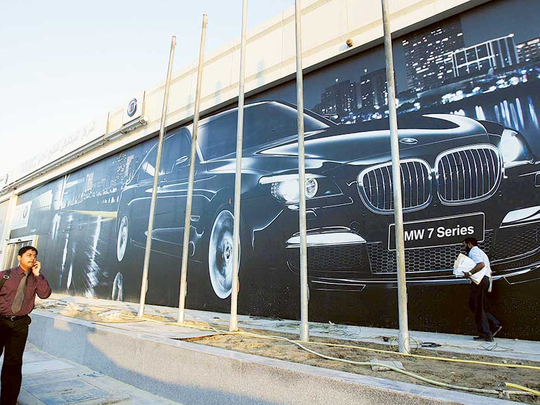
Dubai
UAE’s auto market has just had an excruciating year as consumers held back on new car purchases and preferred not to do anything that might add up to their financial obligations. But the market circumstances have in no way dented the exalted status automotive brands have in the consumer psyche.
That would be enough to get five of them figure into the top 10 UAE “Brand Intimacy” rankings put out annually by the consultancy MBLM. BMW was in second spot, and ahead of Ford, Lexus, Audi and Mercedes. Narrowing it down further, four of the top five intimate brands were from automotive. (For the record, Apple was the brand UAE consumers felt the most intimate about.)
In fact, the automotive industry as a whole had an average brand intimacy quotient of 50.9, the highest among all the consumer-facing sectors and 21.5 points above the cross-industry average. (technology/telecom and financial services came in second and third.)
So, it does seem there is a minimal link between how a consumer perceives a brand and how that particular industry might be faring at a particular time.
“Car owners feel both strongly satisfied with a product that is reliable and safe ... but also choose brands that uniquely represent them and their life,” said William Shintani, Partner at MBLM. “So much so, the car reflects their identity. The (MBLM) study dimensionalises the UAE consumers’ love of cars and automotive industry’s power to create emotional bonds.
“Looking a bit deeper into the data on the characteristics of the bond consumers have with the automotive brands they use, we find “fulfilment” and “identity” do particularly well.”
Last year was particularly interesting for the local auto industry from another perspective — some of the most eye-catching retail environments for auto brands were getting built. Bentley had its majestic multi-level white-fronted showroom on Shaikh Zayed Road, as did the Lamborghini dealer with an equally easy-on-the-senses all-glass structure. Then came Rolls-Royce with a “boutique”, off Al Wasl, where the aim is for a visitor to immerse in all the perceived brand values the marque is known for. The intention is to overwhelm, nothing less.
More recently, McLaren’s had its turn with a new showroom mounted with a giant external screen playing images on a loop. And Toyota’s Al-Futtaim Motors opened a new facility in Abu Dhabi, with a distinctive wave-like structure.
So, is the automotive industry one of the last retail bastions where the old rules of brick-and-mortar apply? Is there less of an encroachment from digital elements? Shintani doesn’t quite see it that way — “While the final transaction in the UAE still happens in the showrooms, it is impossible to separate digital channels from the overall customer experience. Today a customer relationship with any automotive brand most likely began online in some form or another.
“Whether it’s scrolling through customer reviews, configuring the best options or selecting the paint colour at the showroom, it is hard to imagine the customer engagement separate from digital.”
Meanwhile, in the go-for-broke war between physical and online retail, the former can still draw on some hefty numbers. According to data released by Sàvant Data System, Dubai’s brick-and-mortar space might have pulled in around 171.56 million in visitor traffic during 2016, with Abu Dhabi’s shopping and entertainment destinations packing in another 67.9 million. And keep in mind these estimates were derived in a year when overseas visitor traffic into the UAE was still on the muted side.
These numbers did more than enough to ensure the UAE was comfortably placed as the most visited shopper magnet in the region, with a 49.95 per cent share. Saudi Arabia had about 34.39 per cent.
But how many of these visits to malls and high-street locations actually turned into sales? “Generally, the conversion rates depend from field to field of the business,” said Vic Bageria, CEO at Savant. “There are times that retailers have seen 40 per cent increase in conversion and in some cases it’s 7 per cent. The growth takes place gradually and as you use the mined data efficiently, the numbers rise.”
The Savant numbers were derived from live monitoring of visitor headcounts at a particular time, hour or month at key shopping locations. This is derived from straight real-time headcounts and heat mapping, This analyses the “dwell time” at a particular location.
“In 2015, the way to grab consumer attention was a mere marketing or promotional campaign,” said Bageria. “With the evolution of technology, retailers are using the accumulated data to understand and implement a unique shopping experience. In other words, 2017 can be known as the intelligent year for retailers.”











